Gegenscheintarandus - One Stop Anner Reblog Shop

More Posts from Gegenscheintarandus and Others
Something I try to keep in mind when making art that looks vintage is keeping a limited color pallette. Digital art gives you a very wide, Crisp scope of colors, whereas traditional art-- especially older traditional art-- had a very limited and sometimes dulled use of color.
This is a modern riso ink swatch, but still you find a similar and limited selection of colors to mix with. (Mixing digitally as to emulate the layering of ink riso would be coloring on Multiply, and layering on top of eachother 👉)
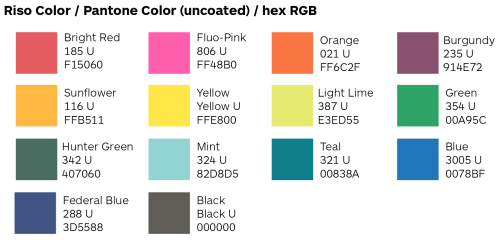
If you find some old prints, take a closer look and see if you can tell what colors they used and which ones they layered... a lot of the time you'll find yellow as a base!
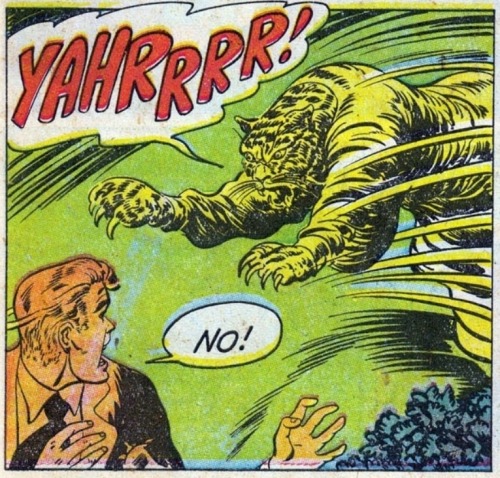
Misprints can really reveal what colors were used and where, I love misprints...
Something else I keep in the back of my mind is: how the human eye perceives color on paper vs. a screen. Ink and paint soaks into paper, it bleeds, stains, fades over time, smears, ect... the history of a piece can show in physical wear. What kind of history do you want to emulate? Misprinted? Stained? Kept as clean as possible, but unable to escape the bluing damages of the sun? It's one of my favorite things about making vintage art. Making it imperfect!
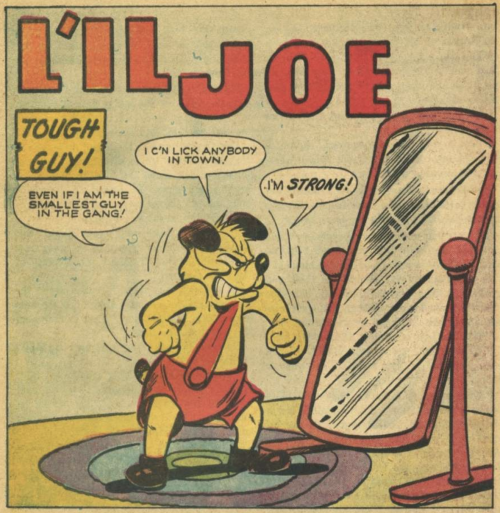
You can see the bleed, the wobble of the lines on the rug, the fading, the dirt... beautiful!!
Thinking in terms of traditional-method art while drawing digital can help open avenues to achieving that genuine, vintage look!
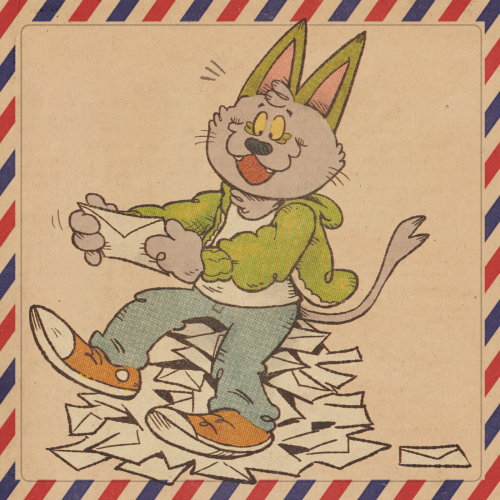

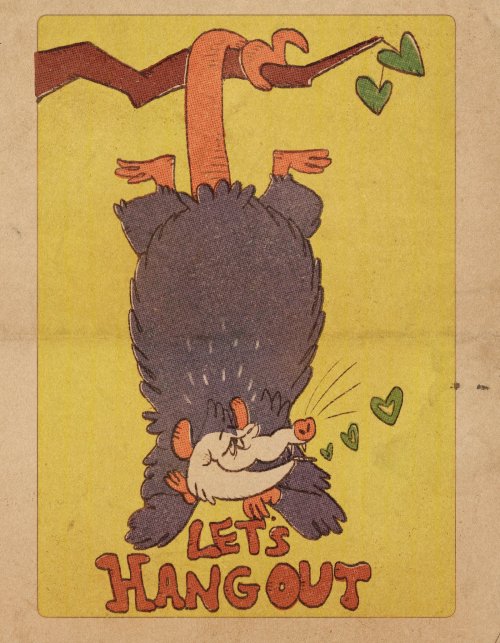

Wally from Amphibia out with his concertina.
Poly Plantar from Amphibia out doing crimes.

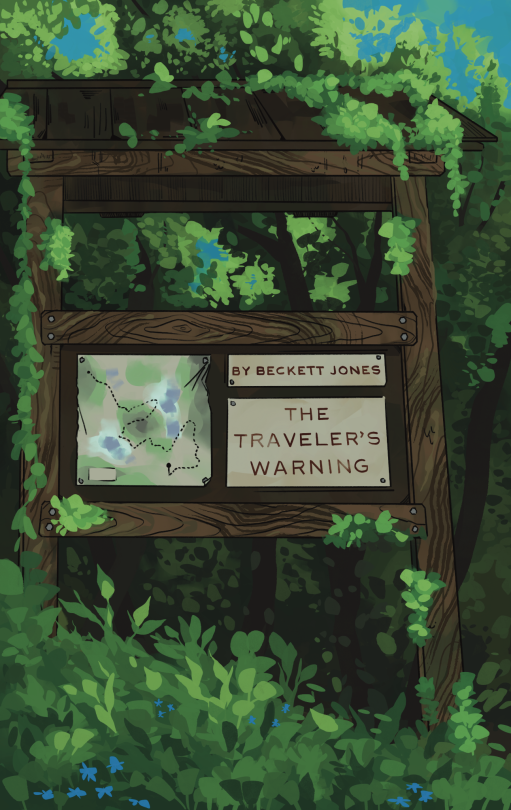



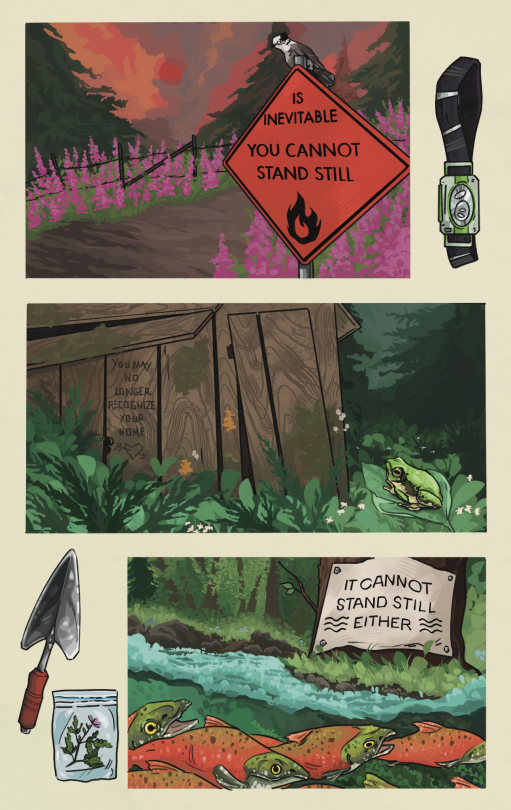



A short comic I made about my experiences as a seasonal worker, and the way places change you.
Prints & PDF
Had a random question for you! Where do you get your ideas for hairstyles? All of your designs always have such a nice variety, but the hair specifically has always stood out to me!
Thank you !
Man, I wish I had a more interesting answer to give you but it really is just me knowing what I like. I just cultivate a lot of image refs for inspiration until I got to the point where I can just freestyle it from scratch.
I'll share some of my pinterest folders though in case anyone wanted to see where I got my inspirations from initially
https://www.pinterest.com/DeepSeaHowoR/doll/doll-hair/ - this one's from a game I think? I'm actually not familiar with the source material but I like the style
https://www.pinterest.com/DeepSeaHowoR/hair
https://www.pinterest.com/DeepSeaHowoR/fashion/ - unrelated to hair, but hey, here's where I compile some cool looking outfits too
Hi, I love your works!! I was wondering where you find the original, unedited pictures you use for your art? Do you take them yourself or find them online?
Hey there! I get them from many different sources! Whenever I can I use my own, and sometimes my followers send me cool pics to use (or put them up in the Sacrificial Altar channel in my Discord), but I find most of what I use through public domain sources online!
For the online part, I put this little list together with some of the common resources I use! Feel free to share it around and copy it:
For an easier experience, I'll copy the relevant part below:
STOCK SITES
- Unsplash: Usually the best quality out of the free stock sites. They’ll try to sell you a subscription plan but you can ignore that.
- Adobe Stock: Select “Free” on the dropdown menu next to the search bar. The free image selection here is big and high-quality, though they feel more like stock pictures than natural photos. Note: They limit how many pictures you can download per account per day, but you can make several accounts to circumvent this if you use it a lot.
- Texturelabs: lots of free, very high-quality textures!
- Pexels: Similar to Unsplash, but it has more pictures with people. If you need a photo with models, this is usually the best place.
- Pixabay: Widest selection, but worst quality control. Go here if you haven’t found anything in other sites and don’t mind sifting through a bunch of garbage pics and occasional AI images.
PUBLIC DOMAIN SOURCES
- Wikimedia Commons: an enormous selection of CC and public domain pictures. Super useful, especially for the really specific images that you'd expect to find on a Wikipedia article. Always check the copyright conditions! To filter by license, search something and then click on the License dropdown under the search bar. Select “No restrictions” for public domain images.
- Picryl: A repository of public domain sources, ranging from ancient historical books and artifacts to fairly modern pictures. If you're looking for something old/historical, chances are it's here! This website is probably one of the most complicated ones to use, so here are three important tips before you use it:
This site added a paywall that appears after the 3rd page of search results. To remove it, install uBlock Origin, go to the “My Filters” page (clicking on the gear icon after opening the extension), and paste this filter: picryl.com##._9oJ0c2
After searching, use the timeline on the top right to narrow down the result by year.
It won’t let you download the full picture without paying, but it always has a link to the source site below the description. Click on that, then copy-paste the image’s name to find it in the original source. That way you can get it for free, and often in better quality than Picryl offers.
National Archives Catalog, The Library of Congress, NASA, and Europeana have wide selections, but they are included in Picryl so it’s usually better to search there and then download them in the source as mentioned above!
- Flickr Search: a ton of usable pictures with a generally more amateur feel, just remember to filter by license using the “Any license” dropdown menu. When you find an image, make sure to check its specific license (you can find it below the image, on the right side).
- Openverse: The official Creative Commons archive, has many sources! Includes other sites on this list, but has a lot of clutter if you don’t filter.
- iNaturalist: a repository of user-submitted images of animals, plants, and fungi. Look for a genus or species, then navigate to the photo list and filter by license.
MUSEUM COLLECTIONS
- The Met: An amazing selection of artifacts from all over the world, with top quality photographs of most of them (usually with several angles for each). You can filter images by material, location, and era.
- Getty Museum: Another smaller selection of museum pieces, but this one includes old photos as well as artifacts. You can also filter by dates, materials and cultures. Make sure you include the “Open Content” filter to only see public domain things!
- Smithsonian: Big selection of around 5 million museum pieces, with some 3D scans of museum pieces. Most pieces just have a single picture that can sometimes be low quality, but pieces with 3D models sometimes also include a lot of high quality photos from multiple angles. This collection also includes things from museums of natural history, so you can also use it to search for bones and specimens.
- Artvee: public domain classical art. They make you pay to download high-quality images.
If you guys got any others, please let me know and I'll add them to the collection!

T. J. Eckleburg
(cover free version on my profile!!)
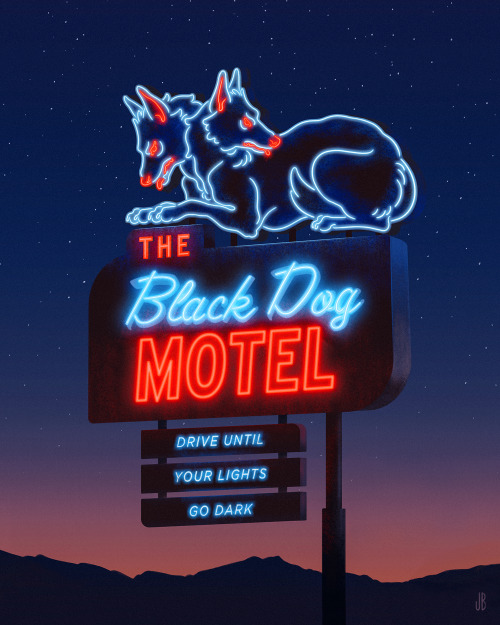




-
 sweatchlorine reblogged this · 1 month ago
sweatchlorine reblogged this · 1 month ago -
 calf-middle reblogged this · 1 month ago
calf-middle reblogged this · 1 month ago -
 laurel000 liked this · 1 month ago
laurel000 liked this · 1 month ago -
 noorshirazie reblogged this · 1 month ago
noorshirazie reblogged this · 1 month ago -
 joiesmineurs liked this · 2 months ago
joiesmineurs liked this · 2 months ago -
 dios-de-papel reblogged this · 2 months ago
dios-de-papel reblogged this · 2 months ago -
 fuckitlive reblogged this · 2 months ago
fuckitlive reblogged this · 2 months ago -
 bulletproof-picassoo liked this · 2 months ago
bulletproof-picassoo liked this · 2 months ago -
 sensitivesol liked this · 2 months ago
sensitivesol liked this · 2 months ago -
 enamorou reblogged this · 3 months ago
enamorou reblogged this · 3 months ago -
 cardstock-kisses liked this · 3 months ago
cardstock-kisses liked this · 3 months ago -
 charleslilacsweater reblogged this · 3 months ago
charleslilacsweater reblogged this · 3 months ago -
 beachhousespacesong reblogged this · 3 months ago
beachhousespacesong reblogged this · 3 months ago -
 mrmarstumtum reblogged this · 4 months ago
mrmarstumtum reblogged this · 4 months ago -
 mrmarstumtum liked this · 4 months ago
mrmarstumtum liked this · 4 months ago -
 huneceaulage reblogged this · 4 months ago
huneceaulage reblogged this · 4 months ago -
 etherealdragonsrealm reblogged this · 4 months ago
etherealdragonsrealm reblogged this · 4 months ago -
 groundbeeef reblogged this · 4 months ago
groundbeeef reblogged this · 4 months ago -
 cant-apult reblogged this · 5 months ago
cant-apult reblogged this · 5 months ago -
 n00dlezzz reblogged this · 5 months ago
n00dlezzz reblogged this · 5 months ago -
 septimusheaps reblogged this · 5 months ago
septimusheaps reblogged this · 5 months ago -
 chapstick-child liked this · 5 months ago
chapstick-child liked this · 5 months ago -
 taromilkshake reblogged this · 5 months ago
taromilkshake reblogged this · 5 months ago -
 bulma reblogged this · 5 months ago
bulma reblogged this · 5 months ago -
 wakuseicloset reblogged this · 5 months ago
wakuseicloset reblogged this · 5 months ago -
 citydive reblogged this · 5 months ago
citydive reblogged this · 5 months ago -
 midnightfruitsqueeze liked this · 5 months ago
midnightfruitsqueeze liked this · 5 months ago -
 corpus-carnelian liked this · 5 months ago
corpus-carnelian liked this · 5 months ago -
 hrtcolumbo liked this · 5 months ago
hrtcolumbo liked this · 5 months ago -
 choking-on-glitters liked this · 5 months ago
choking-on-glitters liked this · 5 months ago -
 wurmwizzard reblogged this · 5 months ago
wurmwizzard reblogged this · 5 months ago -
 cavolettii liked this · 5 months ago
cavolettii liked this · 5 months ago -
 enonem reblogged this · 5 months ago
enonem reblogged this · 5 months ago -
 theoreticalwitchcraft reblogged this · 5 months ago
theoreticalwitchcraft reblogged this · 5 months ago -
 hikari1996 reblogged this · 5 months ago
hikari1996 reblogged this · 5 months ago -
 rarewaterglistening reblogged this · 5 months ago
rarewaterglistening reblogged this · 5 months ago -
 funeralparlorchic reblogged this · 5 months ago
funeralparlorchic reblogged this · 5 months ago -
 mosstoucher reblogged this · 5 months ago
mosstoucher reblogged this · 5 months ago -
 castellation reblogged this · 5 months ago
castellation reblogged this · 5 months ago -
 recoism-journal liked this · 6 months ago
recoism-journal liked this · 6 months ago -
 chaoticstrays reblogged this · 6 months ago
chaoticstrays reblogged this · 6 months ago -
 spitzentrauermusik reblogged this · 6 months ago
spitzentrauermusik reblogged this · 6 months ago -
 toad200 liked this · 6 months ago
toad200 liked this · 6 months ago -
 kat68 liked this · 6 months ago
kat68 liked this · 6 months ago -
 cocoaflakes liked this · 6 months ago
cocoaflakes liked this · 6 months ago -
 weslley3dezao liked this · 6 months ago
weslley3dezao liked this · 6 months ago

welcome to the reblog zone. i'm the anner. anne/roxy, it, this is where i put significant reblogs. simple.
184 posts


